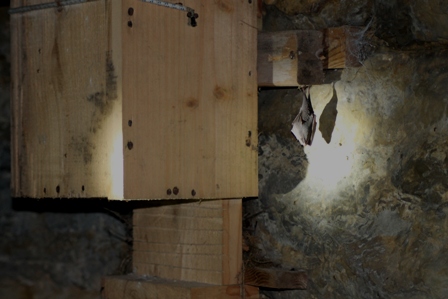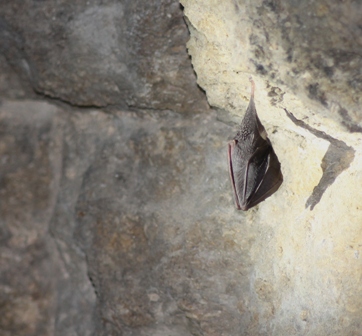
Lesser Horseshoe Bat (Library picture)
Britain’s bats are in the middle of hibernation right now, but that doesn’t mean that they need be out of mind, or out of sight. In fact, if you know the right people you can join up with monitoring hibernation sites, which allows you a glimpse into a little known aspect of the bats’ lives – their long winter sleep. Thanks to Pete Banfield, of the Dorset Bat Group, the kids and I travelled to North Dorset yesterday to see slumbering Lesser Horseshoe Bats. At the first site we crawled through an excitingly narrow gap to check a blocked railway tunnel. Happily, there were 10 Lesser Horseshoes and 1 Brown Long-eared Bat there. The Horseshoes were hanging from the ceiling in their customary

Lesser Horseshoe Bat (Library picture)
manner, with wings folded around the body – a posture peculiar to Britain’s two Horseshoe Bat species. They were also hanging freely, while the Long-eared Bat was inside a box, its ears folded and tucked under the wings. At a gorgeous rural church, its lawns studded by snowdrops, there were a further 20 or so Lesser Horseshoes hanging from the roof of an ancient cellar reached for us by slippery, uneven, moss-covered steps. Bats don’t have unbroken stints of hibernation, but will have recently been encouraged by the mild weather to go out and feed on and off, filling their tummies before bedding down again, often switching hibernation sites afterwards. If you think a bat flying around on a mild winter’s night is somehow confused or disturbed, that isn’t actually the case. It’s routine for the bat, but a surprise for us.
